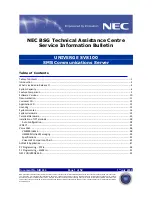
©
Palo
Alto
Networks,
Inc.
Panorama
6.1
Administrator’s
Guide
•
19
Panorama
Overview
Centralized
Logging
and
Reporting
Centralized
Reporting
Panorama
aggregates
logs
from
all
managed
firewalls
and
enables
reporting
on
the
aggregated
data
for
a
global
view
of
application
use,
user
activity,
and
traffic
patterns
across
the
entire
network
infrastructure.
As
soon
as
the
firewalls
are
added
to
Panorama,
the
ACC
can
display
all
traffic
traversing
your
network.
With
logging
enabled,
clicking
into
a
log
entry
in
the
ACC
provides
direct
access
to
granular
details
about
the
application.
For
generating
reports,
Panorama
uses
two
sources:
the
local
Panorama
database
and
the
remote
firewalls
that
it
manages.
The
Panorama
database
refers
to
the
local
storage
on
Panorama
that
is
allocated
for
storing
both
summarized
logs
and
some
detailed
logs.
If
you
have
a
Distributed
Log
Collection
deployment,
the
Panorama
database
includes
the
local
storage
on
Panorama
and
all
the
managed
Log
Collectors.
Panorama
summarizes
the
information—traffic,
application,
threat—
collected
from
all
managed
firewalls
at
15
‐
minute
intervals.
Using
the
local
Panorama
database
allows
for
faster
response
times,
however,
if
you
prefer
to
not
forward
logs
to
Panorama,
Panorama
can
directly
access
the
remote
firewall
and
run
reports
on
data
that
is
stored
locally
on
the
managed
firewalls.
Panorama
offers
more
than
40
predefined
reports
that
can
be
used
as
is,
or
they
can
be
customized
by
combining
elements
of
other
reports
to
generate
custom
reports
and
report
groups
that
can
be
saved.
Reports
can
be
generated
on
demand,
on
a
recurring
schedule,
and
can
be
scheduled
for
delivery.
These
reports
provide
information
on
the
user
and
the
context
so
that
you
correlate
events
and
identify
patterns,
trends,
and
potential
areas
of
interest.
With
the
integrated
approach
to
logging
and
reporting,
the
ACC
enables
correlation
of
entries
from
multiple
logs
relating
to
the
same
event.
















































